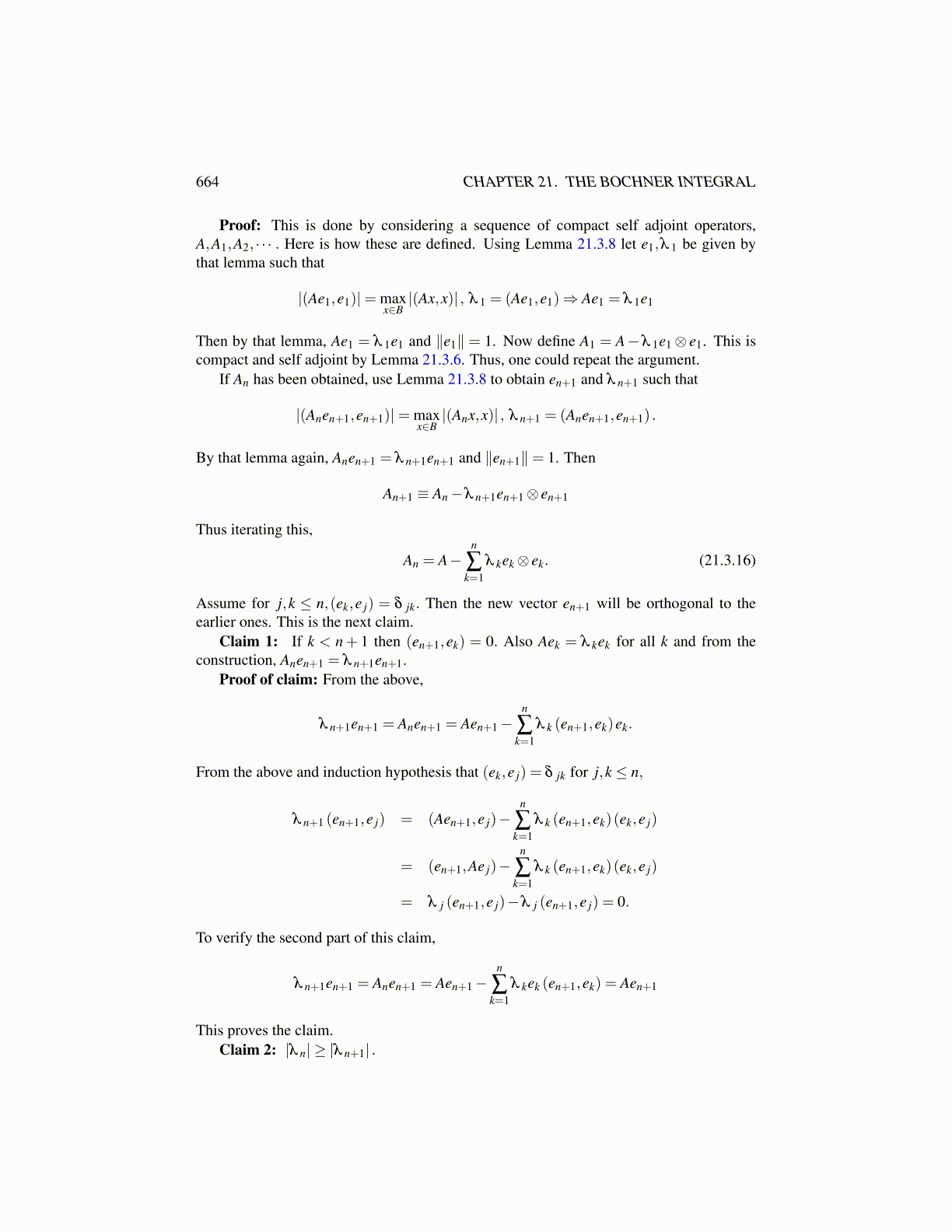
664 CHAPTER 21. THE BOCHNER INTEGRAL
Proof: This is done by considering a sequence of compact self adjoint operators,A,A1,A2, · · · . Here is how these are defined. Using Lemma 21.3.8 let e1,λ 1 be given bythat lemma such that
|(Ae1,e1)|= maxx∈B|(Ax,x)| , λ 1 = (Ae1,e1)⇒ Ae1 = λ 1e1
Then by that lemma, Ae1 = λ 1e1 and ∥e1∥ = 1. Now define A1 = A−λ 1e1⊗ e1. This iscompact and self adjoint by Lemma 21.3.6. Thus, one could repeat the argument.
If An has been obtained, use Lemma 21.3.8 to obtain en+1 and λ n+1 such that
|(Anen+1,en+1)|= maxx∈B|(Anx,x)| , λ n+1 = (Anen+1,en+1) .
By that lemma again, Anen+1 = λ n+1en+1 and ∥en+1∥= 1. Then
An+1 ≡ An−λ n+1en+1⊗ en+1
Thus iterating this,
An = A−n
∑k=1
λ kek⊗ ek. (21.3.16)
Assume for j,k ≤ n,(ek,e j) = δ jk. Then the new vector en+1 will be orthogonal to theearlier ones. This is the next claim.
Claim 1: If k < n+ 1 then (en+1,ek) = 0. Also Aek = λ kek for all k and from theconstruction, Anen+1 = λ n+1en+1.
Proof of claim: From the above,
λ n+1en+1 = Anen+1 = Aen+1−n
∑k=1
λ k (en+1,ek)ek.
From the above and induction hypothesis that (ek,e j) = δ jk for j,k ≤ n,
λ n+1 (en+1,e j) = (Aen+1,e j)−n
∑k=1
λ k (en+1,ek)(ek,e j)
= (en+1,Ae j)−n
∑k=1
λ k (en+1,ek)(ek,e j)
= λ j (en+1,e j)−λ j (en+1,e j) = 0.
To verify the second part of this claim,
λ n+1en+1 = Anen+1 = Aen+1−n
∑k=1
λ kek (en+1,ek) = Aen+1
This proves the claim.Claim 2: |λ n| ≥ |λ n+1| .